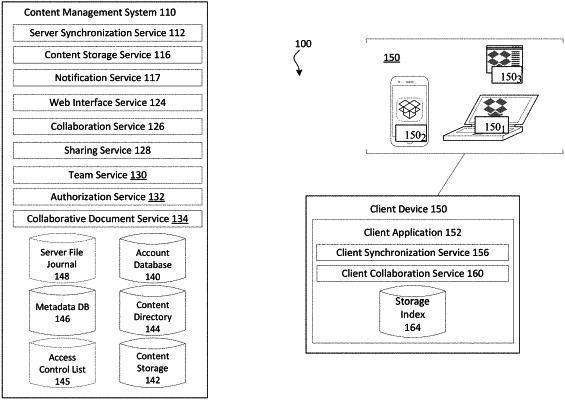| CPC G06F 16/27 (2019.01) [G06F 1/04 (2013.01); G06F 3/065 (2013.01); G06F 3/067 (2013.01); G06F 3/0619 (2013.01); G06F 3/0623 (2013.01); G06F 3/0629 (2013.01); G06F 3/0652 (2013.01); G06F 9/547 (2013.01); G06F 11/1469 (2013.01); G06F 12/1466 (2013.01); G06F 16/11 (2019.01); G06F 16/113 (2019.01); G06F 16/116 (2019.01); G06F 16/119 (2019.01); G06F 16/122 (2019.01); G06F 16/125 (2019.01); G06F 16/128 (2019.01); G06F 16/13 (2019.01); G06F 16/137 (2019.01); G06F 16/148 (2019.01); G06F 16/152 (2019.01); G06F 16/156 (2019.01); G06F 16/16 (2019.01); G06F 16/162 (2019.01); G06F 16/168 (2019.01); G06F 16/172 (2019.01); G06F 16/176 (2019.01); G06F 16/178 (2019.01); G06F 16/1734 (2019.01); G06F 16/1744 (2019.01); G06F 16/1767 (2019.01); G06F 16/1787 (2019.01); G06F 16/18 (2019.01); G06F 16/182 (2019.01); G06F 16/183 (2019.01); G06F 16/184 (2019.01); G06F 16/185 (2019.01); G06F 16/1827 (2019.01); G06F 16/1844 (2019.01); G06F 16/2246 (2019.01); G06F 16/2255 (2019.01); G06F 16/2322 (2019.01); G06F 16/2358 (2019.01); G06F 16/2365 (2019.01); G06F 16/2379 (2019.01); G06F 16/24552 (2019.01); G06F 16/275 (2019.01); G06F 16/907 (2019.01); G06F 16/9027 (2019.01); G06F 16/951 (2019.01); G06F 16/955 (2019.01); G06F 16/958 (2019.01); G06F 21/10 (2013.01); G06F 21/604 (2013.01); G06F 21/6218 (2013.01); H04L 9/3213 (2013.01); H04L 9/3247 (2013.01); H04L 63/08 (2013.01); H04L 63/0853 (2013.01); H04L 63/10 (2013.01); H04L 63/101 (2013.01); H04L 63/102 (2013.01); H04L 67/06 (2013.01); H04L 67/1095 (2013.01); H04L 67/1097 (2013.01); G06F 2201/84 (2013.01); G06F 2212/1052 (2013.01); G06F 2221/2141 (2013.01); H04L 67/01 (2022.05); H04L 67/306 (2013.01)] | 20 Claims |

|
1. A computer-implemented method comprising:
determining, by an application associated with a content management system, that server content items stored by the content management system and client content items stored on a client device are out of synchronization, wherein the determining is based on at least one of:
a server difference between the server content items and a shared content items that are synchronized between the content management system and the client device, and
a client difference between the client content items and the shared content items that are synchronized between the content management system and the client device;
generating, by the application associated with the content management system, a set of operations configured to converge the server content items and the client content items based on the determining that the server content items and the client content items are out of synchronization;
detecting a violation of a rule by an operation in the set of operations;
identifying resolution actions for the violation of the rule; and
applying the resolution actions to the set of operations.
|